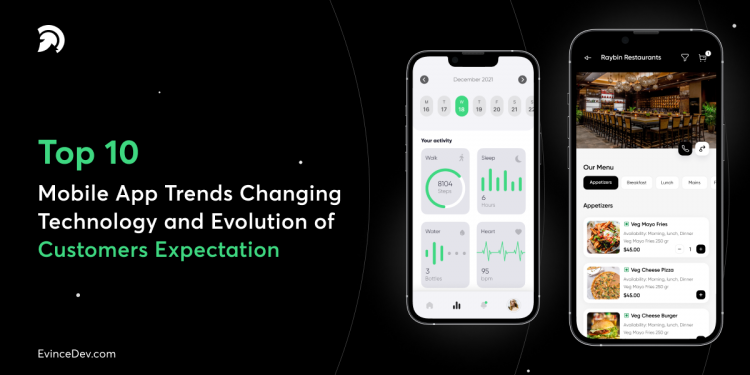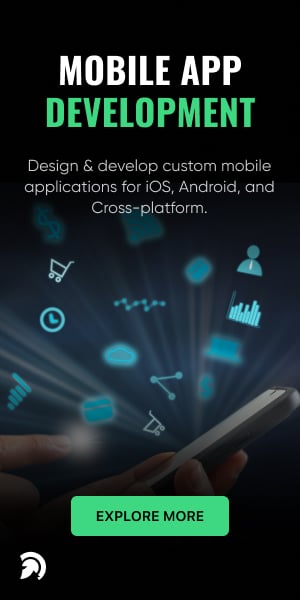Mobile apps have made our lives easier. We can now buy products from our favorite businesses from our smartphones within minutes. As a result, people are spending more time on mobile apps. Customers now spend an average of 4.2 hours per day using apps on their smartphones, an 30% increase from two years prior.
Even businesses have started building apps or improving their existing ones to meet today’s customers’ expectations.
As a result, new mobile app development trends have started emerging, changing how businesses create apps. To stay ahead of the game, you must follow the latest mobile app development trends.
What are the new trends in mobile application development?
Today, we will discuss the trending technology in app development, including wearable app integration, app security, and beacon technology. Let’s get started!
1. Cloud-native
Cloud-native is a mobile device application that uses cloud computing to build an app. In other words, cloud-native is a set of small and independent services deployed in the cloud.
The primary advantage of cloud-native is that it fastens the app development process and minimizes risk as you can easily replace the failed components.
Also, unlike standard mobile app development, where developers focus on security after completing the development work, the security features are integrated from the beginning in cloud-native.
Now, if you are still wondering why, you should use cloud-native for mobile app development, here are some reasons:
- Auto-scalability: Cloud-native apps can scale services automatically and independently using microservices. You don’t need to manage them daily.
- Independent architecture: Microservice architecture allows you to build applications independently of each other. They can even be managed and deployed separately.
- Cost-effective: In cloud services, you pay only for what you use. You can even create and delete resources as per your requirements. This makes the overall mobile app development process cost-effective.
That said, here are the key characteristics of cloud-native app development:
- Multiple services: You can break each application into services called microservices. This allows you to focus on one aspect of the app at once. These services work together, and it appears to the end-user as if they are accessing a single application.
- Resiliency: Cloud providers usually have automated failover and disaster recovery mechanisms in place. So, you won’t have to worry about outages or failure.
- API-based communication: Each microservice is designed in a way that it can be integrated with other applications via APIs.
2. Wearable App Integration
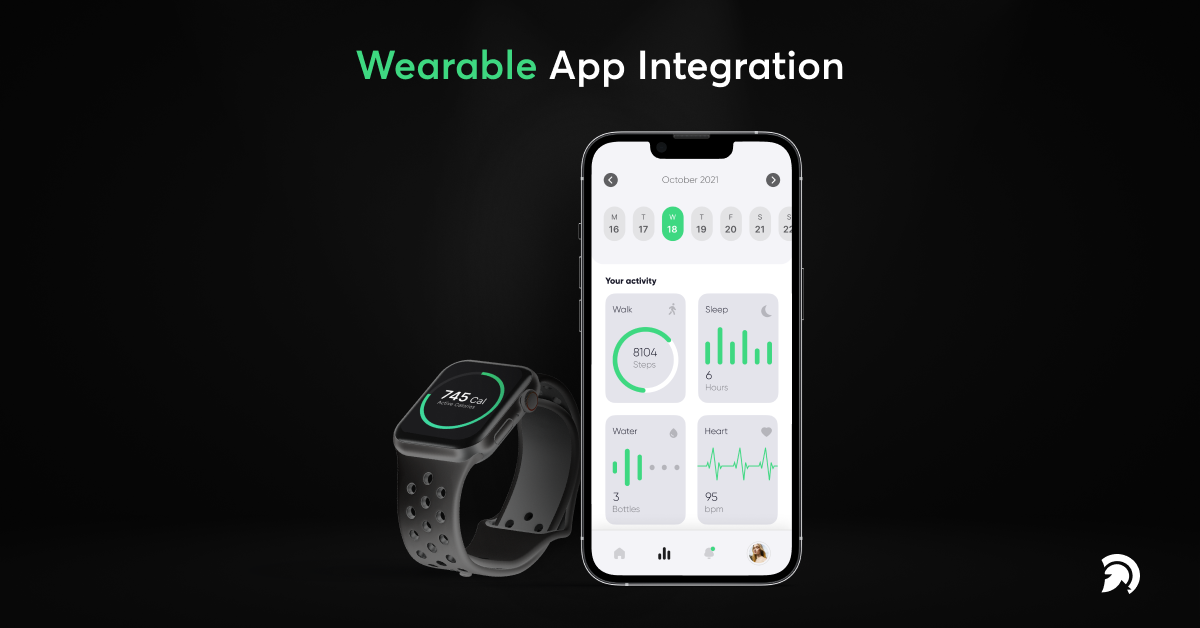
The number of connected wearable devices worldwide has nearly tripled in five years, increasing from 325 million in 2016 to 929 million in 2021. It is further expected to grow to 1,105 million by 2022.
The rising popularity of wearable devices gives businesses new opportunities to boost their revenue.
Depending on your business and the service you provide, you can use APIs to integrate your mobile app with wearables, such as Apple Watch, Fitbit, Samsung Watch, Fossil, and more.
As of now, people can receive/disconnect calls from their smartwatch, check social media messages, measure their heart and pulse rate, and track fitness activities.
By integrating your app with wearables, you can provide them with additional features, enhancing your brand reputation and engagement.
When creating wearable app integration, keep your interface concise and straightforward. Because of small screen sizes, people like to interact with easy-to-use features.
However, it is crucial to test your functionalities before launching wearable app integration, as even a minor bug can hurt your efforts. Besides, people always have their smart devices with them, and they will quickly switch over your app if it doesn’t meet their expectations.
If you don’t have experts in wearable technology in your team, it’s best to outsource it to a reliable wearable app development company. This will ensure you get the most out of your investment while keeping your end-users happy from the very beginning.
3. IoT Enabled Mobile Apps
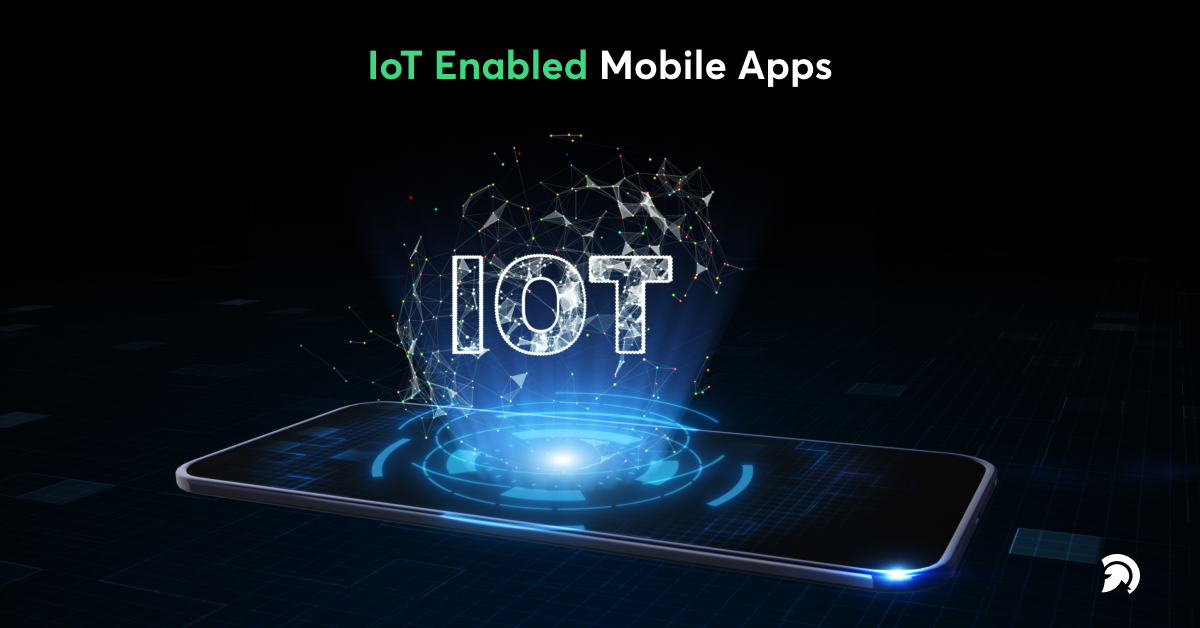
The Internet of Things (IoT) industry is overgrowing. There will be 35.82 billion IoT devices by 2021 and 75.44 billion by 2025. Moreover, every second, 127 devices are connected to the internet for the first time. It is, in fact, one of the biggest mobile app development trends in 2022.
IoT-enabled mobile apps allow users to control other devices remotely, resulting in improved efficiency and quality of life. Here are some more benefits of IoT-enabled mobile apps:
- Valuable insights: Since IoT keeps the users’ app and device connected 24/7. You can collect valuable insights related to their usage. You can then use this information to make accurate decisions related to consumer behavior and optimize your business processes accordingly.
- Gain a competitive edge: Not many businesses have IoT-enabled mobile apps. However, by tapping the technology’s full potential, you can gain a significant market share in your niche.
- Better customer experience: IoT developed applications help users do tasks that impact their daily lives, such as controlling a device, carrying out transactions using smart readers, etc. These apps also help them track their activities, making their experience smooth and seamless.
- Facilitates interactive mobile apps: IoT can make mobile apps more engaging and interactive. It also opens the gate to personalization. That means your mobile app can stay relevant and up-to-date with the latest IoT functionalities, thereby beating the competition.
Industries that can leverage IoT mobile apps to their advantage include:
- Smart Homes
- Agriculture
- Retail
- Industrial production
- Wearables
- Healthcare & medicine
- Smart cities (traffic and accident alerts)
4. Extra Attention to App Security
While not a mobile app development trend exactly, security is in the mind of everyone. For example, 84% of smartphone users say privacy or security is an essential factor when deciding whether to install an app. Besides, 64% of mobile users worry that using apps could make them vulnerable to identity theft.
It’s not just about end-users. A single breach could cost your company not just millions of dollars but a lifetime of trust.
Here is how you can give extra attention to app security:
- Leverage source code encryption
- Perform a thorough QA and security checks, including penetration tests
- Use only trusted third-party libraries
- Implement file-level and database encryption
- Leverage the latest cryptography techniques
- Use stronger, high-level authentication
- Deploy tamper-detection technologies
5. Rising Demand for On-Demand Apps

The market for on-demand mobile apps and websites is expected to reach $335 billion by 2025. The primary reason for the rising interest in on-demand apps is that it allows businesses to offer tailored solutions to their customers.
Here are some more reasons why on-demand apps are trending in the mobile app development software industry:
- Accessible communication between businesses and customers
- 24/7 availability of products and services
- Relatively low prices for customers
- Increased convenience
For businesses, on-demand apps help them stand out from the crowd and ensure their customers get the best possible experience. It also allows them to launch new functionalities and scale their operations quickly.
Leading on-demand apps include Uber, Airbnb, Doordash, and Drizzy. The requirement for on-demand services surged rapidly during the pandemic as people couldn’t go out even for essential services like food.
Therefore, we can soon expect more and more businesses to launch on-demand apps and offer efficient services to customers. If you offer on-demand services like taxis or food, it is high time to build your own on-demand mobile app.
6. Mobile Wallets
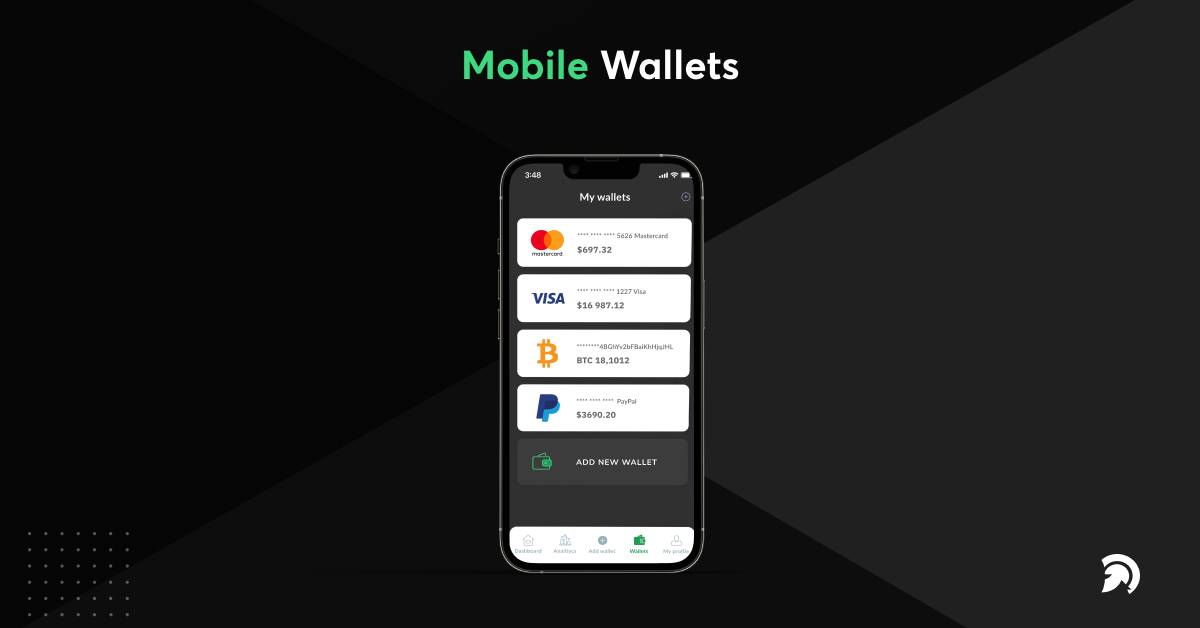
Our lifestyles were affected due to the pandemic, and it pushed us to embrace a digital-first approach. Everything nowadays is done online, from grocery shopping to paying someone for their services. Mobile wallets have made digital payments more accessible to people.
As more people use the internet to transfer money, service providers will improve and encrypt their products. When it comes to mobile wallet development, one of the main issues is the security of funds and transactions.
After the pandemic, social distancing has become the new norm. These contactless payment systems like Apple Pay and Google Pay help to alleviate the problem. Security and convenience of payment will drive progress in this industry in the future, causing it to become a significant mobile application trend.
7. Augmented Reality and Virtual Reality
Who hasn’t heard about Pokemon Go? The game was a worldwide sensation, introducing augmented reality into the market. Virtual reality provides an entirely artificial environment, whereas augmented reality superimposes artificial things on real-world ones.
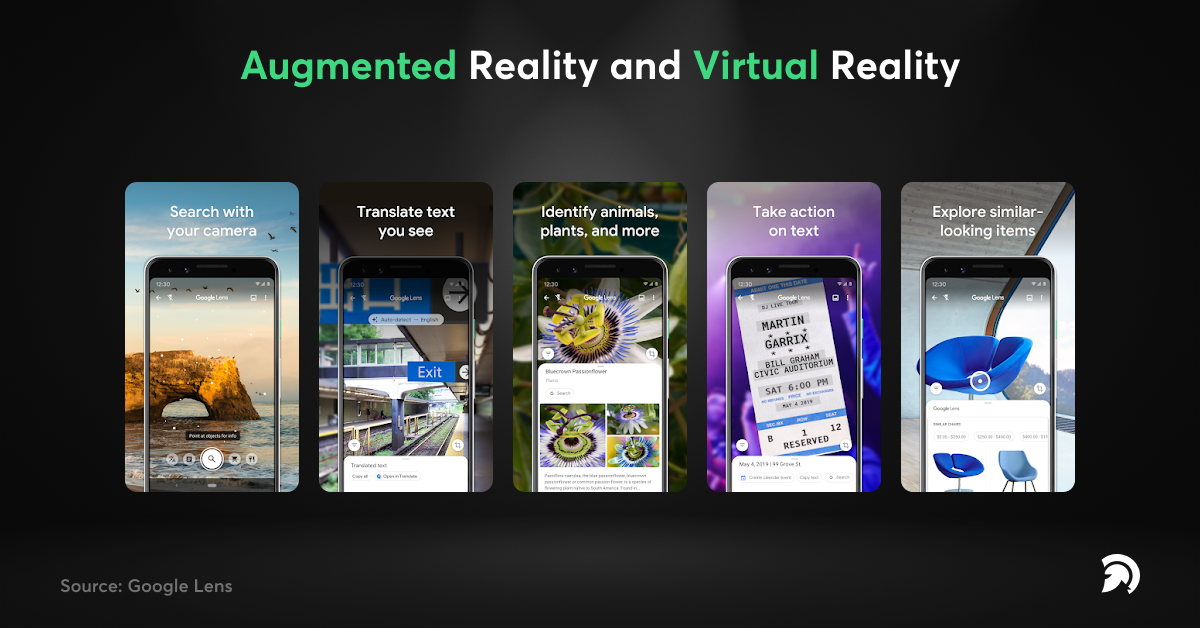
However, games aren’t the only place that uses AR and VR. These technologies are helpful to make training and learning apps more effective. They can provide the learner with a realistic idea of what it’s like to do the job.
Other sectors where AR and VR applications are changing the game include interior design and marketing. The application can show you how a product would look in a particular place and give you a better notion of its size and form.
8. AI (Artificial Intelligence) & ML (Machine Learning)
It’s no wonder that AI and ML are on the top. They would have been one of the top mobile app development trends in the market and are still on the list for 2022. It demonstrates how valuable and adaptable these technologies are.
Chatbots, face recognition, motion sensors, virtual assistants, speech recognition, textual prediction, financial analysis, and much more are all enabled by AI and ML. The plethora of options and convenience may integrate technology into a mobile app as technology advances.
Artificial intelligence (AI) and machine learning (ML) will become increasingly significant in application development. IT, sales, banking, and customer support are the top industries that have successfully integrated AI and ML into their applications. For example, Google has built Duplex, which can make phone calls on behalf of people to schedule appointments.
9. Predictive Analytics

In mobile app development, we may use predictive analytics in two ways. Predictive analytics uses the large volume of data available, extracts valuable information, and applies that information to enhance different operations. It has the potential to improve both the user experience and the development process.
Everything, including app development, follows a pattern. Predictive analytics may analyze data from various developers to detect problems before they arise and recommend alternative solutions.
When applied to the user-end, it can anticipate what action the user will do next or offer to finish statements. It may even assist in identifying and uncovering the app’s pages with the lowest retention rate. It can aid advertisers in determining which alerts are receiving the most traction.
10. Beacon Technology
The last one on our mobile app development trends list is beacon technology. Beacons are small, wireless transmitters that send signals (or messages) to other smart devices nearby using low-energy Bluetooth.
Best for retail stores, beacon alerts businesses (and their mobile apps) when someone enters or leaves their location. It also provides information about which store areas a person visited or spent the most time in. You can then use this information to create and send personalized offers to customers via mobile apps (push notifications).
![]()
But it’s not just retail that can leverage beacon technology. Other industries include:
- Healthcare (to promote free checkups to bypassers or promote health camps)
- Real estate (to give property information to bypassers)
- Education (to guide campus tours to new students, information about the queue in the library, taking attendance, etc.)
- Travel (expedite security checks, keyless entry in hotel rooms, etc.)
However, the key functioning elements are:
- A beacon device
- An app that supports beacon technology
- Open Bluetooth
Conclusion
Technology is changing the way businesses create and manage mobile apps. It also empowers them to offer personalized services to customers without compromising security and meeting their expectations.
If you are unsure or don’t have the resources to implement these technologies in your mobile app, you can get help from experts. For instance, EvinceDev is the leading mobile app development company that can help create tailored applications using the latest technologies. What are you waiting for? Contact EvinceDev today and get your mobile app to the market faster than your competitors!
